
6 minute read
¡Viva La Primavera! Spring in Andalucía
wrote the Nobel Prize-winning Chilean poet Pablo Neruda. Regrettably, many of the usual rites of spring have been cut from the calendar – Sevilla’s Feria de Abril, Romerias in the Andalusian countryside, even Easter’s solemn rituals, por Díos – but we can still take inspiration from the season of rebirth. Or as witty Wisconsin journalist Doug Larson also wrote, ‘Spring makes you feel like whistling even with a shoe full of slush’. Belinda Beckett whistles up some of her favourite things about April in Andalucía.

Wild flowers stipple fields like a Monet painting
FLOWER POWER
‘The earth laughs in flowers’, wrote the poet philosopher Ralph Waldo Emerson, and the laughter doesn’t come louder than Andalucía, with more species than anywhere else in Europe in bloom at once. Wild flowers stipple fields like a Monet masterpiece, the grass is as green as the flag of Andalucía, lavender grows like weeds or is tamed in dazzling purplestriped fields for sale to garden centres and use in antiseptics, air fresheners and stress-relieving pot pourris. And scarlet corn poppies peep timidly from hedgerows or run riot across entire fields in the cooler foothills of the Sierra Nevada. Spain is also the world’s biggest cultivator of opium poppies, after Australia, grown at classified locations for pharmaceutical use and for the poppy seeds on your burger bun!
April is also cherry blossom time. These frothy pink and white trees aren’t exclusive to Japan – Spain is the third largest cultivator of cherries in Europe after Turkey and Italy. AIfarnate, the highest village in Málaga province, is known as Andalucía’s Valle del Jerte after the area in Extremadura that produces the most. For much of this biodiversity, we have the Moors to thank. They spent seven centuries recreating the garden paradise of Al-Andalus according to ideology of the Koran. ‘Bread feeds the body, indeed, but flowers feed also the soul’. It’s a good thought.
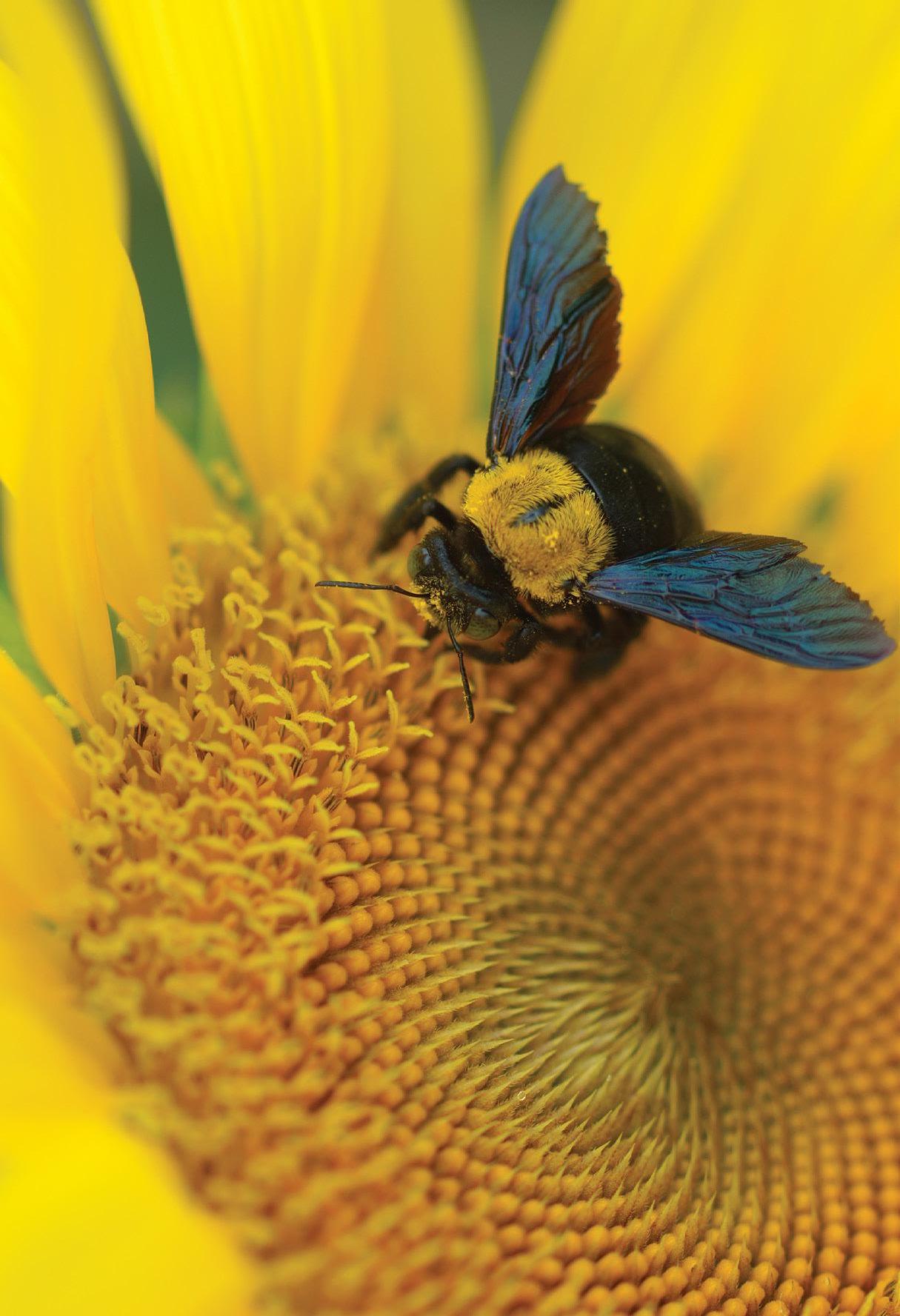
Carpenter bees get busy
BUMPER-SIZED BEES
Robin Williams said ‘Spring is nature’s way of saying “Let’s party!’” and there’s no party animal quite like the carpenter bee, so-called because they nest inside bamboo cane. Prolific at this time of year, when they’re not pollinating the wisteria they’re making whoopee on the wing. Black, shiny and gigantic (about the size of your thumb), when there are two of them buzzing you while clasped together in coitus, it’s scary. But the males have no sting and the females are docile unless provoked. Shut your eyes and let their drowsy droning lull you to sleep in your lounger on a sunny spring day.
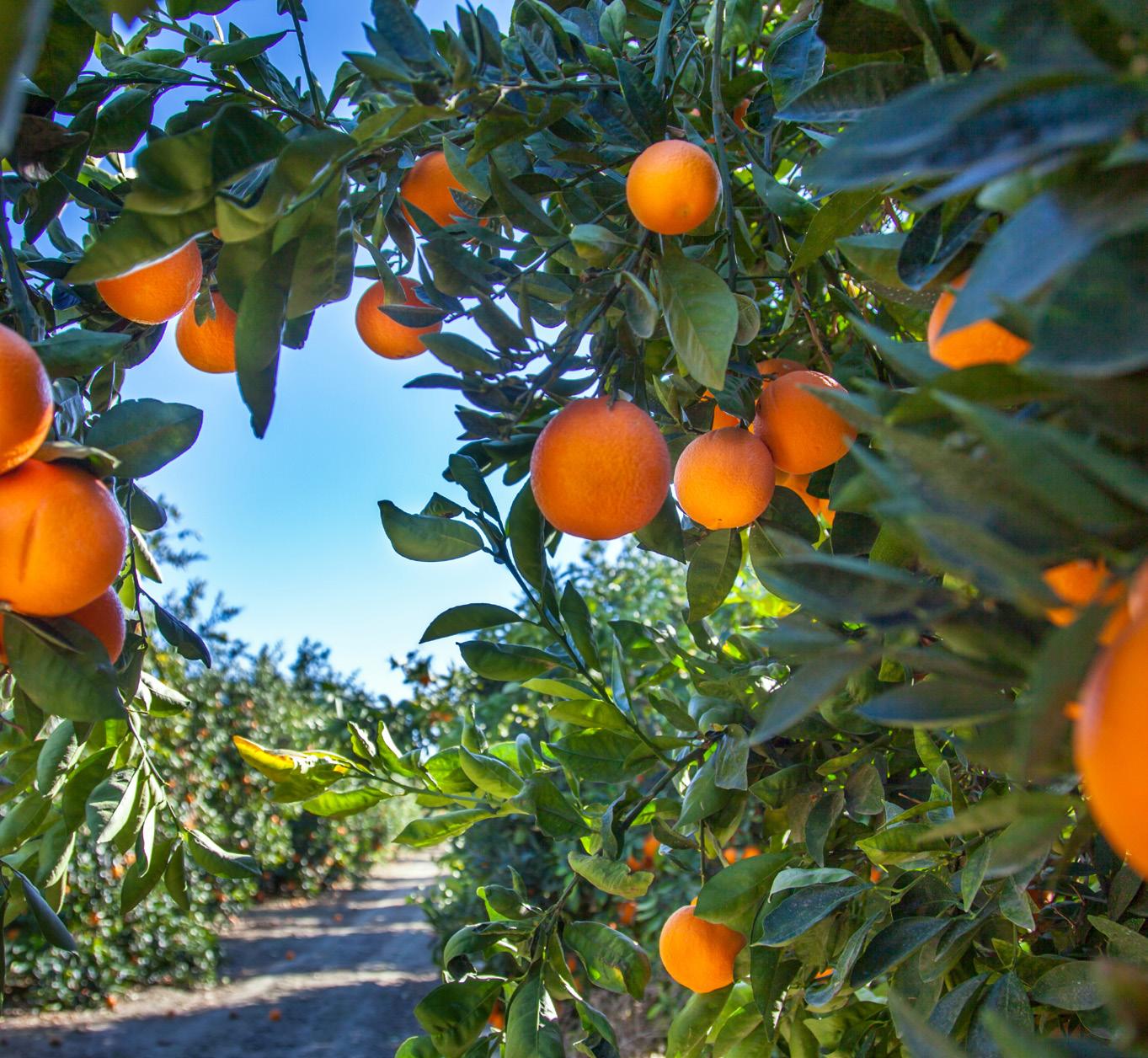
Oranges growing in Sevilla
ORANGE OVERLOAD
Oranges grow on trees in Andalucía, and not just in the campo. They line the streets and plazas of every village and town, delighting and disappointing visitors in turn when they realise Seville oranges are too tart to eat – but when life gives you bitter oranges, make marmalade! The small waxy flowers that blossom in spring aren’t much to look at but they pack a knockout olfactory punch, an intoxicating scent that perfumes the entire city of Sevilla in April when all 31,306 trees (officially) are in bloom. Which is one of the reasons the Moors planted them – to sweeten the air in their crowded citadels. Today essence of azahar (Arabic for orange blossom) is used in perfumes, honey and cosmetics and in commercial orchards the fallen blossoms are dried to make homeopathic teas. A cuppa is said to lift the spirits which is what we all need this month!
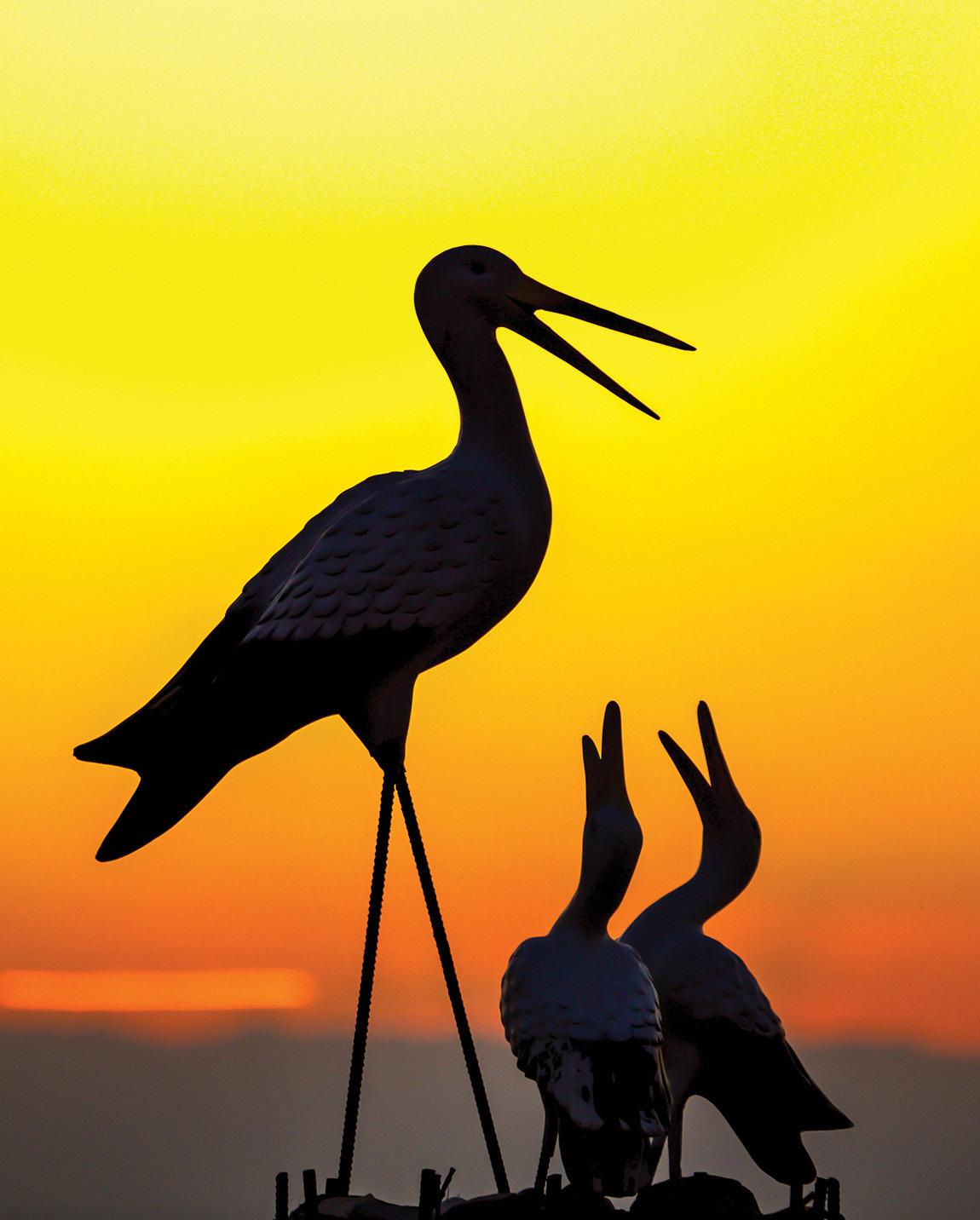
Storks are occupied delivering their own babies
STORK NURSERIES
It’s amazing storks have the time to deliver human babies in April when they’re so busy caring for their own. At this time of year no road in the Campo de Gibraltar is without its high rise white stork nurseries. Every church spire, pylon and telegraph pole is topped with a breeding pair, joined as the season progresses by two or three smaller, fluffy heads. White storks used to migrate south for the winter but they’re strictly staycationers these days, thanks to landfill sites where they can dine on their own doorstep.
For years when they were endangered, local councils provided nesting platforms to prevent the birds from electrocution. Since their population exploded, metal spikes have been installed to discourage them, (although these canny avians work round them). A universal symbol of fertility, storks also inspired Mae West’s great one-liner dismissing an odious suitor in the 1934 film Belle of the Nineties: ‘His mother should have thrown him away and kept the stork.’

Andalucía’s woodland wonders: Parque Natural de los Alcornocales
WOODLAND WONDERS
For self-isolation you can’t beat a walk through a cork oak forest three times the size of Madrid (State of Alarm decrees permitting). Although in June and July you might have to share Los Alcornocales Natural Park with the cork harvesters stripping the bark for wine stoppers.
Stretching from Ronda to Tarifa, there are hundreds of trails skirting rivers, bull ranches, goat pastures and holm oak glades where Iberian pigs snuffle for the acorns that make Andalucía’s jamon de bellota so scrumptious. Spring mushrooms are another speciality as edible fungi flourish in the fog-drenched valleys of this ‘mist forest’ until May.
It’s also the only woodland outside the tropics to find the rare psilotum nudum fern, discovered by New Zealand botanist Betty Molesworth Allen (when she was living in our village of Los Barrios in Cádiz, as it happens). It won her an OBE.
Albert Einstein wrote: ‘Look deep into nature, and then you will understand everything better.’ It’s worth a go.
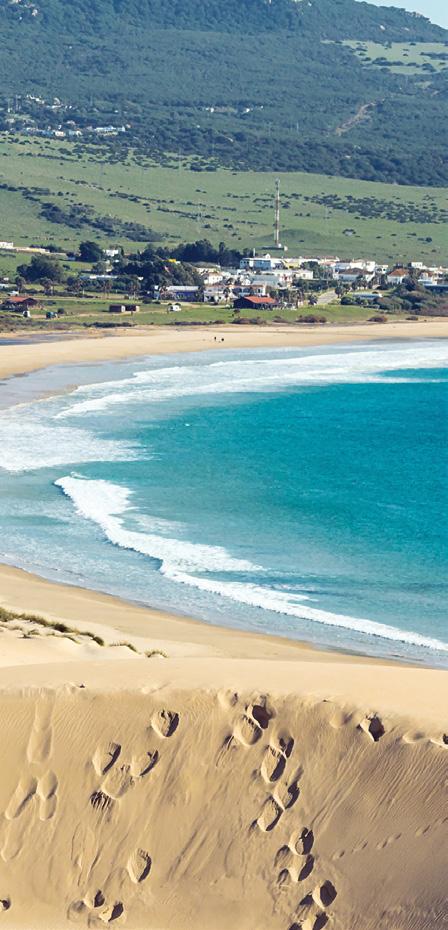
Solitary beaches: Playa de Bolonia, Tarifa
ZERO-FOOTPRINT BEACHES
The Costa del Sol’s beaches are famous but you’ll never walk alone on them, even in April. Conversely, you can stroll for kilometres along the Atlantic shoreline of Cádiz province without seeing another pair of footprints in the sand. The German poet Rainer Rilke, who loved Andalucía, recommended beach walks. ‘When anxious, uneasy and bad thoughts come, I go to the sea, and the sea drowns them out with its great wide sounds,’ he wrote. The beaches flanking Cape Trafalgar where the famous battle was fought are especially invigorating. With the whipping Atlantic wind and the crashing of surfer-sized waves, you won’t be able to hear yourself worry.
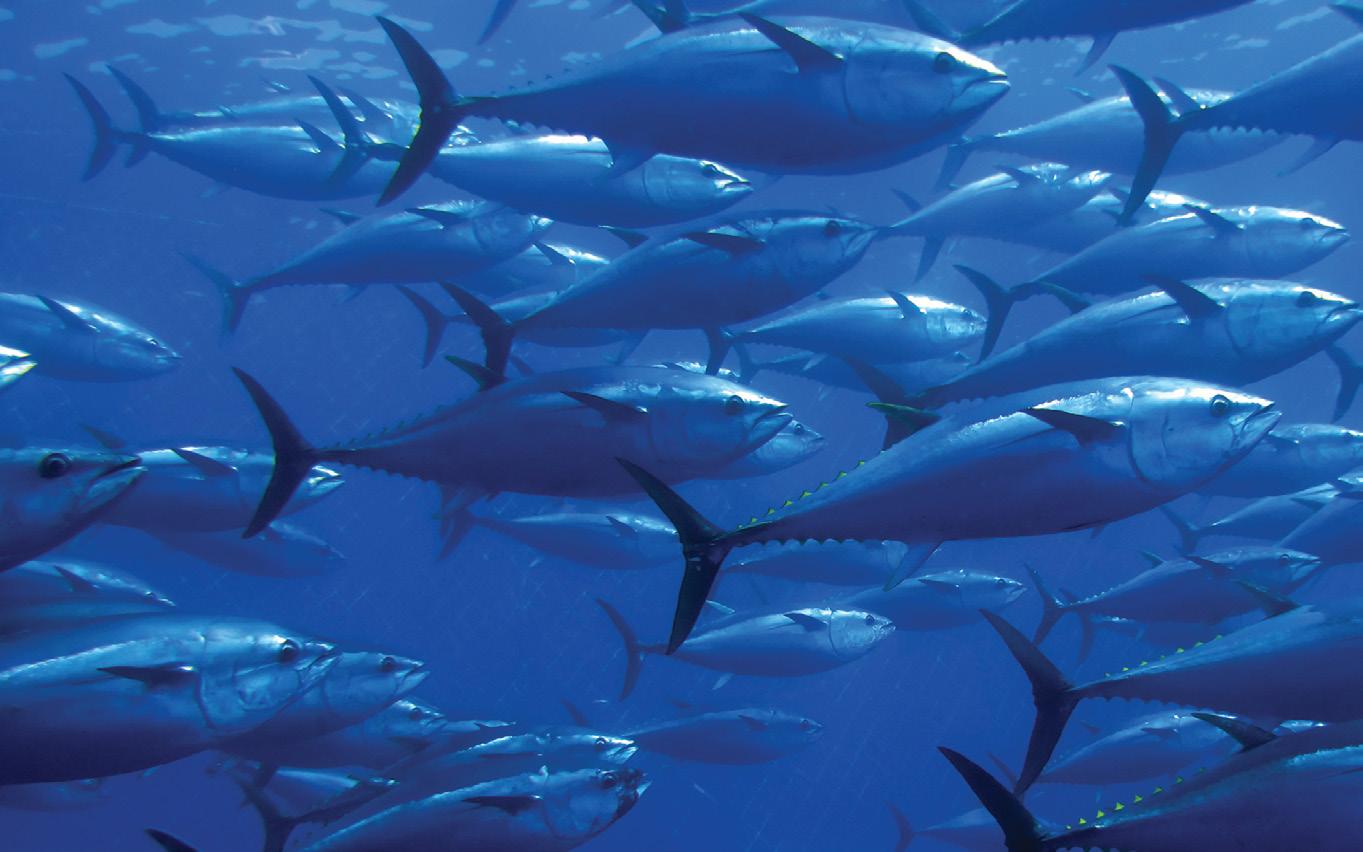
Tuna coming into the bay
TUNA TIME
The arrival of Atlantic Bluefin tuna is spring’s grand finale and a cause for celebration along the Cádiz coast where these ocean giants are still caught by almadraba trap nets the sustainable Phoenician way. These giant circular structures float offshore from the end of April to June, catching the tuna en route to their Mediterranean spawning grounds at their plumpest and juiciest best. Fished strictly by quota, wild tuna can weigh 400 kilos and the choicest cuts of atun rojo fetch over €80 a kilo. But as Cádiz Michelin ‘Chef of the Sea’ Ángel Léon promises, “One taste and you’ll never eat tinned tuna again.”

Cocktails in the sunset
COCKTAIL-HOUR SUNSETS
No more burning the midnight oil! The clocks sprang forward last month, providing daylight until a much more civilised hour. The sun doesn’t go over the yardarm until after work – the perfect time for a pre-prandial tipple on the terrace. A sundowner cocktail or chilled fino from Jerez is just the job for chasing the blues away while you dwell on the words of motivational blogger Kristen Butler: “Sunsets are proof that no matter what happens, every day can end beautifully.” Salud!





